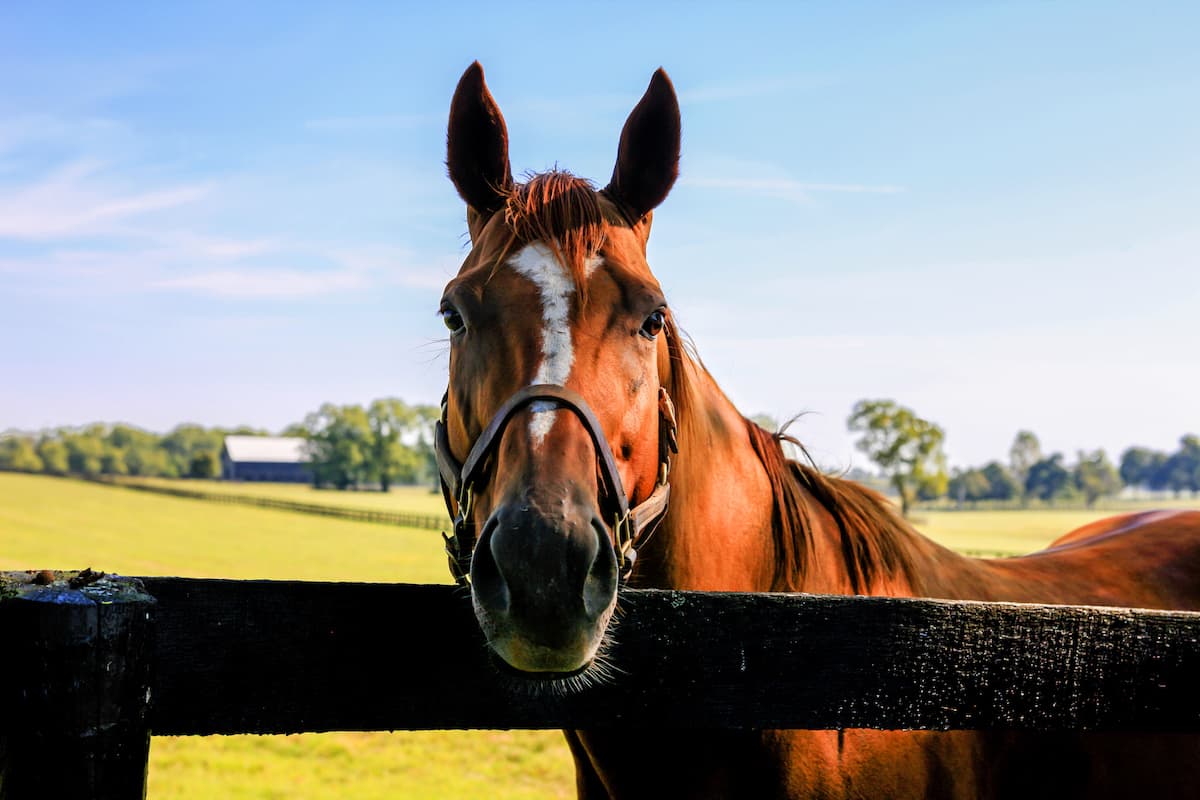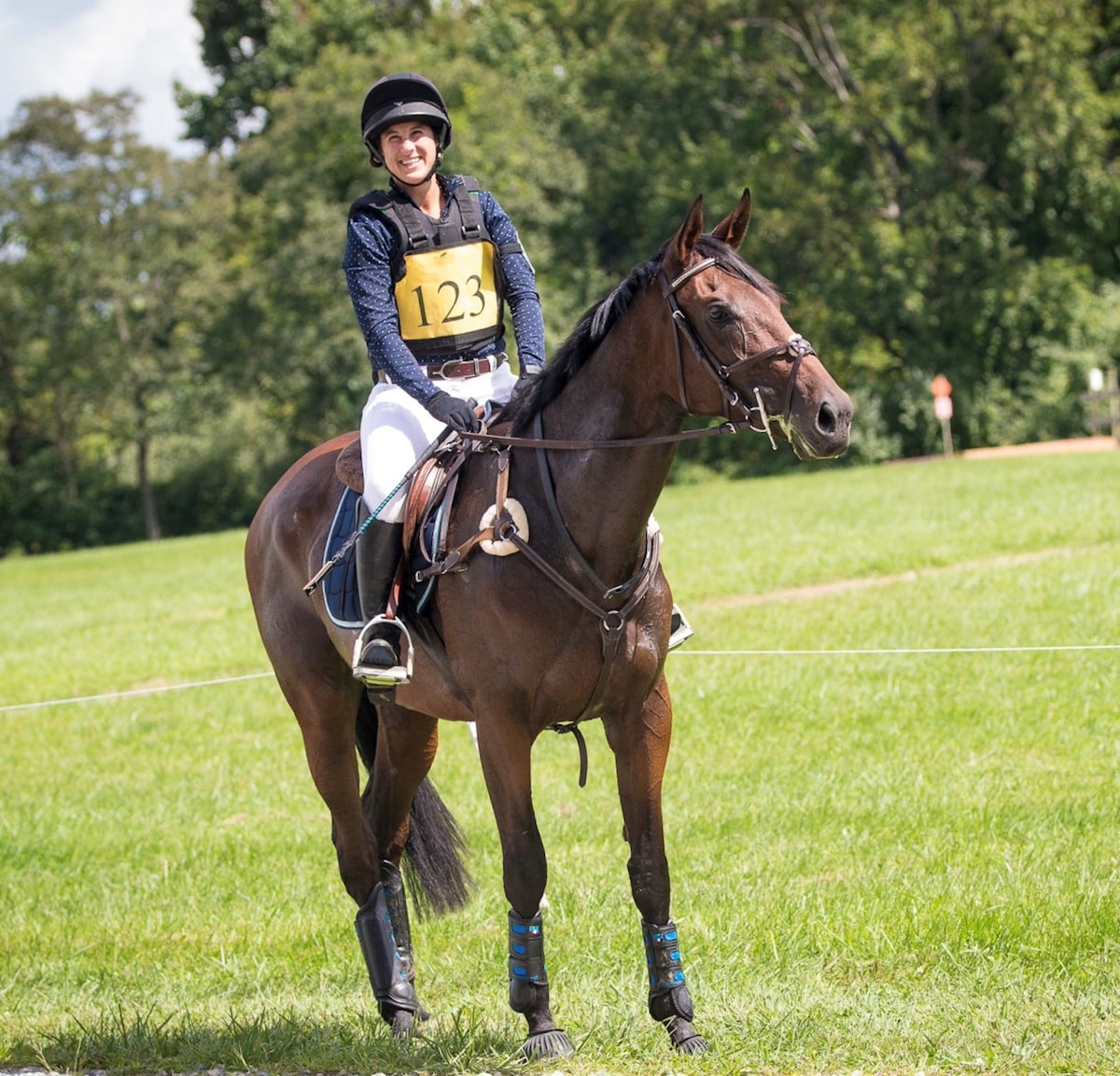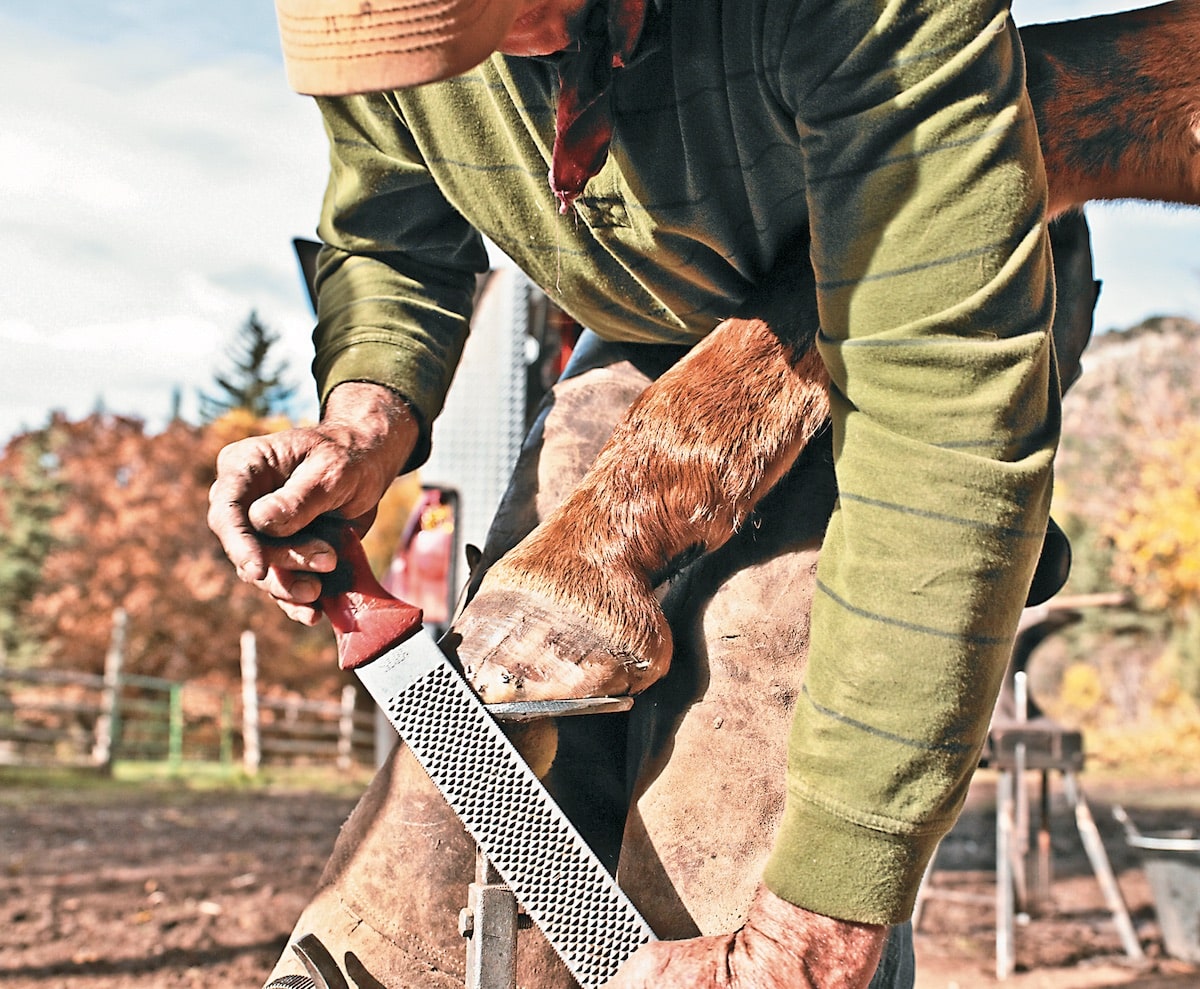Why many Thoroughbreds need to be “let down” after retiring from the track.

Recently retired racehorses can benefit from turnout and time off before resuming training in a second career. Courtesy istock.com
You’ve found the perfect off-track Thoroughbred, he’s passed the prepurchase exam with flying colors and you can’t wait to collect him from the backside to begin his new career. But before you start planning your training and show schedule, consider this: Your horse just wrapped up his first career, one in which he’s trained and worked in one specific way from the time he was a weanling until he walked through the gap and off the course a final time.
Although Thoroughbreds are well-known to thrive on work, recently retired racehorses can benefit from time off to allow their minds and bodies to rest before resuming training in their second career. This process is often referred to as letting down.
What Happens During Let Down?
“For me, letting down helps start the transition in a racehorse’s mind from the track to its new job,” says Nicole Scherrer, DVM. “It obviously allows them physical rest, but I think the mental break is even more important.”
Scherrer is a clinical assistant professor of ophthalmology at the University of Pennsylvania School of Veterinary Medicine’s New Bolton Center, in Kennett Square. In her spare time she retrained the 2014 filly Small Batch (Cherokee’s Boy — Ketubah, by Broken Vow) and competed in Eventing at the 2017 Thoroughbred Makeover. Stakes-placed Small Batch, now owned by Omega Horse Rescue, in Aireville, Pennsylvania, raced seven times, making her final start on Jan. 1, 2017, at Laurel Park, in Maryland.
“Watching my mare transform this year has been an eye-opening process,” Scherrer says.
Amy Lynn Paulus, of Paulus Racing and Performance Thoroughbreds, in Northern Kentucky, has taken hundreds of horses off the track — many from her family’s racing stable — and helped transition them into new homes and second careers. In addition to serving as a panelist in a roundtable on the current demand for OTTBs at the 2017 Thoroughbred Makeover, presented by Thoroughbred Charities of America, (see page 67), she was responsible for connecting nearly two dozen OTTBs that competed in the event with their current owners or trainers.
“It’s important to let these guys down off the track because it gives them a chance to find themselves and remember how it feels to be a horse again,” she says. “Everyone — even serious human athletes — sometimes needs a break from their training routine before being able to move forward with other goals.”
In most cases Thoroughbreds come off the track at peak fitness — much fitter than they’ll typically need to be in their second careers and at the start of their basic training. Letting them down can help bring that fitness level closer to what they’ll need in their second careers, in addition to allowing their musculoskeletal systems to adapt.
“Although they are not as fit as they were as a racehorse, they develop completely new muscles,” Scherrer says. “They learn to balance and hold themselves and (they) develop a topline along with that.”
Other changes to consider as you’re letting your horse down include:
Environment One of the biggest adjustments your horse will face will likely be his living arrangements.
“Remember, these horses are not regularly turned out when they’re on the track,” Paulus says.
Have a safe turnout area ready for your horse to reduce the chances of adding a pasture injury to any rehab process you might already have underway.
“Make sure they know where boundary lines are, they respect the fence and they are not in an area where they will overly exert themselves or get hurt, such as huge acreage and hilly fields with ditches, creeks or ponds,” Paulus says.
Eventually, she says, once your horse has gotten used to turnout, it’s safe to transition him into a bigger pasture.
Additionally, keep in mind that it might have been years since your horse was turned out in a herd. It will likely take time (and some mildly unsettling moments for owners to watch) for horses to get used to each other, but Paulus says it’s just part of being a horse.
“I think it’s important to allow them to establish herd dynamics on their own — of course, within reason and without someone getting hurt,” she says. “So many people are terrified of the initial squeals, nipping and running but, at the end of the day, this is how herd dynamics are formed. Once they are part of a herd, they will learn the schedule of that herd and start acting more like an OTTB rather than a racehorse.”
Diet Racehorse diets and digestive tracts also need to undergo some changes during let down. Kristen Janicki, MS, PAS, a Nicholasville, Kentucky-based equine nutritionist and OTTB owner, says the ideal body condition score for a racehorse in work is about 4 to 5 out of 9, which is slightly lower than that of a pleasure or low-level performance horse (depending on the discipline your OTTB will participate in, your target body condition score will be a 5 to 6). As we’ve mentioned, they also exercise at a high intensity and, thus, need high-energy feed. This typically includes large amounts of grain and/or commercial concentrates (sometimes 15-18 pounds of high-sugar and -starch feed per day, divided up into several small meals) coupled with high-quality hay.
Researchers have learned that this type of diet can put horses at risk for developing gastric ulcers; in fact, they’ve determined that 80-90% of Thoroughbred racehorses have the painful lesions in their stomachs.
The letting down period is a good time to work with your veterinarian to ensure your OTTB is ulcer-free.
You’ll also want to start transitioning your horse to a more appropriate diet for his new workload. Janicki says that in many cases you’ll want your OTTB to gain a bit of weight, as well as transition to a diet that includes more forage and less grain. Forages should always be the main source of nutrients in your horse’s diet, which will help keep his hindgut (the cecum and large colon) healthy. Supplemental feed — including ration balancer pellets, commercial concentrates and grains — should balance the horse’s forage ration, supplying any nutrients missing or deficient from hay or pasture.
Always be sure to make dietary changes slowly over the course of a few weeks.
Hoof Care It’s not uncommon for Thoroughbreds to come off the track with less-than-ideal feet, riddled with issues ranging from thin soles and walls to a “long-toe, low-heel” hoof conformation, which can put unnecessary stress on the limbs’ tendons and ligaments. Have your farrier evaluate your horse’s hooves early in the let down period so he or she can begin making necessary adjustments — such as achieving better hoof balance or implementing therapeutic shoeing to try to fix a problem — before you put your horse back in training.
Keep in mind that horses rarely race barefoot. While you might be accustomed to keeping horses unshod, discuss with your farrier whether — based on hoof quality — your horse is a candidate for a quick transition out of shoes or if he would benefit from a slower changeover. Also understand that not all OTTBs can go barefoot. Whether it’s due to eventual work intensity over hard footing or terrain or simply hoof structure and quality, some horses need the support and protection shoes offer to flourish in their second careers.

Dr. Nicole Scherrer, who retrained Small Batch for the 2017 Thoroughbred Makeover, believes let down is particularly important for horses mentally. Courtesy Dr. Nicole Scherrer
Get Your Vet Involved
Even if you had a prepurchase exam conducted prior to buying your OTTB, it’s wise to have your veterinarian examine the horse once he’s arrived home for several reasons.
“Being a vet, I am biased,” says Scherrer, “but I want to start with a full medical evaluation so we can direct their let down toward any issues they may have. If there is a lameness problem I would rather know right away.”
A checkup upon arrival also allows your veterinarian to gauge whether your horse is body-sore. Some racehorses come off the track in good order, while others are stiff and sore all over. Generally speaking, the sorer the horse, the longer let down he needs. Additionally, your veterinarian might uncover medical issues that weren’t obvious before.
This assessment also gives your veterinarian a chance to recommend treatment early, rather than waiting until the horse has been on vacation for a few months before starting rehab.
Finally, not all ex-racehorses can go directly from a stall to a pasture and remain in one piece. Depending on your horse’s temperament, he might benefit from a slower transition from a stall to a round pen to a paddock and, finally, to a pasture, building up to several hours in each enclosure before moving to the larger size. Some OTTBs might also benefit from a veterinarian-prescribed long-acting sedative when first turned out.
Discuss with your veterinarian the best way to introduce your horse to more frequent turnout in larger areas and any precautions you might need to take.
Let Down Protocols
There’s not a single “right” way to let down a horse fresh off the track. Very generally speaking, however, there are two common trains of thought when it comes to letting an OTTB down: Turn them out for a break — letting their mind rest, as our sources have described — or put them right into training.
“Most people have a preference, and I guess I see the two as a break followed by transition versus starting the transition immediately,” says Scherrer.
So which way is better?
“I think both methods can create a really nice horse as long as they are done the right way,” she says. “One method may work well for one horse and not at all for another.”
Paulus agrees. “I don’t believe there is one right answer. These horses are just like us; you can’t use the exact same plan and expect the same response.
“I do believe that in cases where horses have been over-run at the bottom levels, they’ve become sour with their job or, in horrible cases, have been mistreated, the best thing you can do is turn them out and leave them alone,” she says. In these cases, she adds, it’s important not to rush the process and start even groundwork too early as the horse needs to gain confidence in himself and heal mentally and physically.
On the other hand, Paulus says, she’s had many horses that are quite happy going straight back into work.
“These are the horses that loved their job, were successful and were treated well,” she says. “They thrive off a schedule. When you turn these types out and leave them alone, they tend to fall apart and even at times become depressed, whereas the ones that need it actually start to thrive, and you see both body conditions and spirits coming up.”
Of course, there’s also the middle ground — a combination of downtime and training. Paulus says you can work on low-stress skills and tasks while still allowing your OTTB to rest and recover.
“The most important thing you can possibly do … is to develop a bond with your horse,” she says. “If you’ve developed that bond and trust with your horse initially on the ground, they then see you as their ‘herd leader.’ ”
This will not only make spending time away from his new equine friends easier to manage but also give you a solid foundation on which to build a second career.
Additionally, Paulus says easy skills such as ground-driving or long-lining, longeing and stretching to improve flexibility go a long way toward building confidence and trust and desensitizing horses.
Not surprisingly, the length of the let down period depends on the horse.
“Each horse is very different,” Scherrer says. “If you have a healthy horse … you have less of a rebuilding period.”
Likewise, Paulus says she firmly believes your horse will tell you when he’s ready.

Have your farrier make hoof adjustments before you put your horse back in training. Courtesy istock.com
Do’s and Don’ts
With the basics covered, remember the following tips to make the most of your OTTB’s let down:
■ Do maintain a routine. Scherrer says OTTBs are accustomed to very structured routines on the racetrack: Each has specific job and schedule surrounding that job.
Paulus adds, “Horses on the track are claimed and moved to new locations, feed and hay are changed based on what track they’re at; a schedule is the only thing that ever stays the same for these guys.”
Maintaining some of that structure will go a long way toward making the transition from racehorse to sport horse a smooth one.
■ Don’t expect too much from your OTTB right away, and take things as slow as needed. “Pushing any horse too quickly can lead to many problems,” Scherrer says.
■ Don’t compare your OTTB’s progress to others. Each horse is an individual and should be treated as such. “Each horse is very different,” says Scherrer. “I feel like most OTTBs take a few months to start carrying themselves and stop relying on the rider to hold them. Some will be able to perform as a 3-year-old and others are just not mature enough. There is no one-plan-fits-all with them.”
■ Do use an equine babysitter when introducing your OTTB to new activities or tasks to help build his confidence. “Group activities can make any new situation less frightening,” says Scherrer.
■ Do understand your OTTB’s past life … and use it to your advantage. “The most important thing people can do when buying an OTTB is open (themselves) up to learning the ways of the track,” Paulus says. “So often I talk to people that have no idea how track life works, the tedious schedules these horses work on or why things are done the way they are.”
She says she and others are willing to explain life on the track and, “if you have an open ear and are willing to listen and incorporate some of it into your new OTTB’s transition, it will make for a happier horse and a better understanding for the both of you.”
The Bottom Line
Ultimately, letting down a Thoroughbred is like almost everything else in the horse world: It depends on the individual and should be tailored to meet each horse’s needs.
Finding the right combination of time, structure, nutrition and patience can help set up a horse for a successful transition from racehorse to sport or pleasure horse.
“The Thoroughbred is such a fantastic breed,” says Scherrer. “I am always impressed with their willingness to please and how well a Thoroughbred can perform in a second career.”
This article was originally published in the Winter 2018 issue of Off-Track Thoroughbred Magazine, the only publication dedicated to the Thoroughbred ex-racehorse in second careers. Want four information-packed issues a year delivered to your door or your favorite digital device? Subscribe now!

